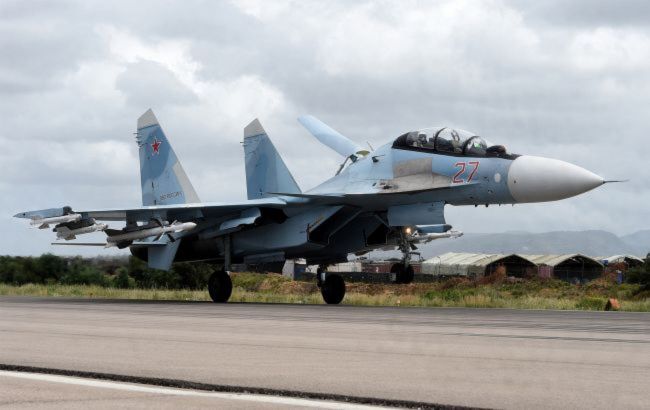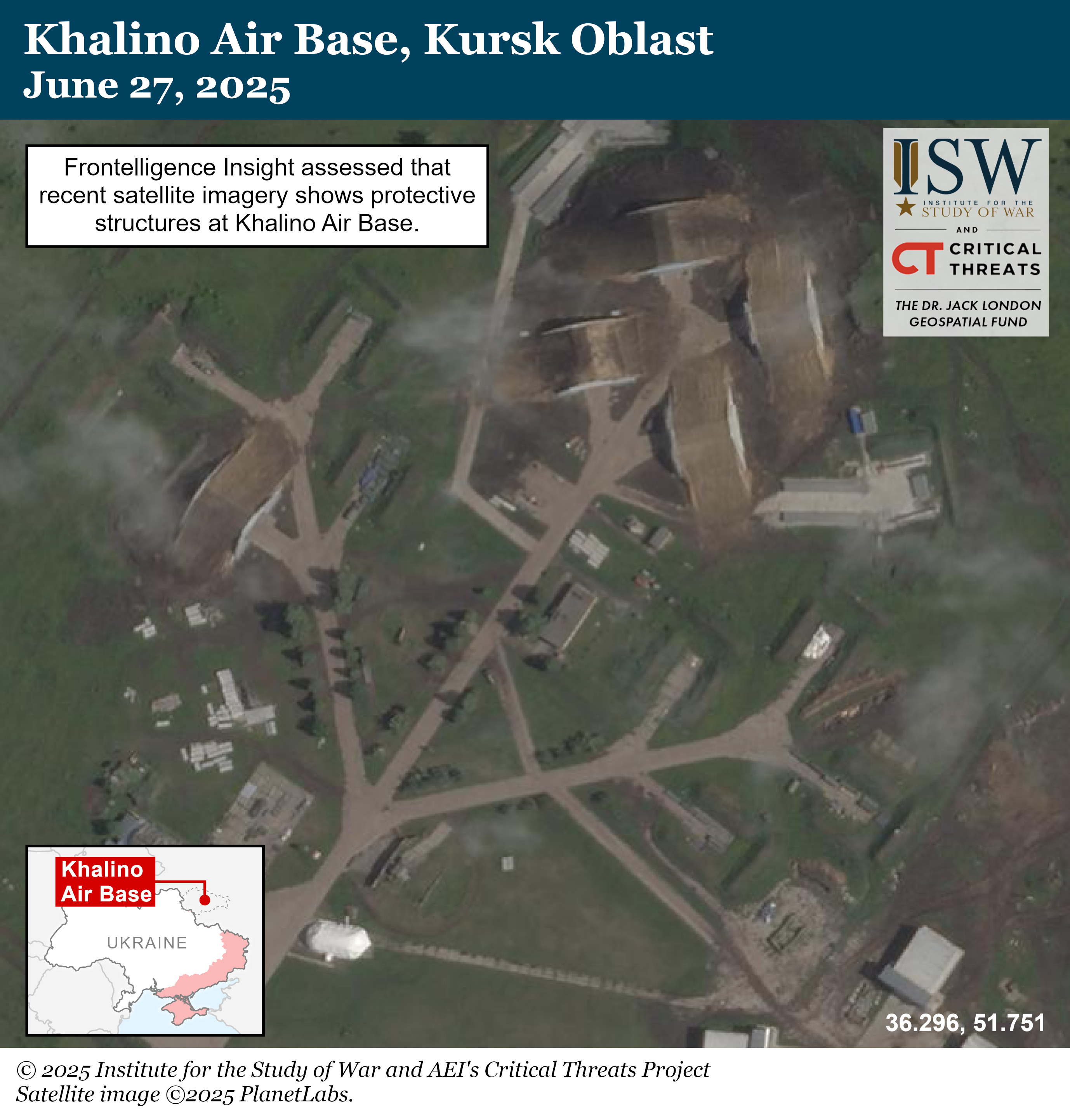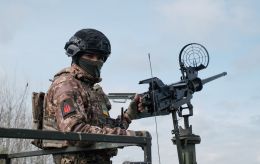Russia building aircraft bunkers after 'Spiderweb' special op - ISW
 Illustrative photo: Russian Su-35 fighter jet (Getty Images)
Illustrative photo: Russian Su-35 fighter jet (Getty Images)
Russian forces have begun constructing protective structures at several of their airbases following the SBU’s Spiderweb on June 1, according to a report from the Institute for the Study of War (ISW).
Satellite imagery obtained by the Ukrainian organization Frontelligence Insight on July 7 shows that at the Khalino airbase in Russia’s Kursk region, Russian forces have constructed around 10 fortified bunkers covered with layers of earth, 12 concrete bunker-type structures without soil covering, and eight hangar-like buildings positioned on the apron.
Similar findings were confirmed by Planet Labs satellite imagery dated June 27.

Additionally, according to Frontelligence, satellite images from July 9 show that Russian forces have built two concrete bunker-type structures at the Saky airbase in occupied Crimea.
Planet Labs imagery from July 7 also reveals the presence of concrete shelters for aircraft at the site.

At the same time, as noted by Frontelligence, as of July 9, no construction activity was observed at the Dzhankoy airbase in occupied Crimea.
Wreckage left uncleared
The organization also reported that recent satellite images show aircraft wreckage still present at the Belaya airbase in Irkutsk region and the Olenya airbase in Murmansk region, both of which were hit by Ukrainian drones during Spiderweb.
Russian officials and military bloggers have repeatedly criticized the country’s leadership for its failure to protect military infrastructure from Ukrainian drone strikes throughout the full-scale invasion.
"Russia may be starting to construct protective structures at its air bases after three years of war in response to Spiderweb," ISW analysts stated
Spiderweb operation
On June 1, Ukraine’s Security Service (SBU) launched a large-scale operation inside Russia under the codename Spiderweb.
As part of the operation, strike drones targeted five airbases hosting Russia’s strategic aviation.
The targets included facilities at the Olenya, Belaya, Dyagilevo, and Ivanovo airfields. The drones had been pre-positioned in cargo trucks that approached the bases directly, allowing them to launch quickly and strike aircraft.
Drones also damaged a military base for nuclear submarines in the city of Severomorsk.
The operation dealt a major blow to the Russian Armed Forces, destroying roughly 34% of their strategic aviation fleet. Total losses are estimated at $2 billion.
Spiderweb was in the works for a year and a half. It has already been recognized as unprecedented in scale and damage inflicted on the adversary, and as one of the most successful operations in modern history.

